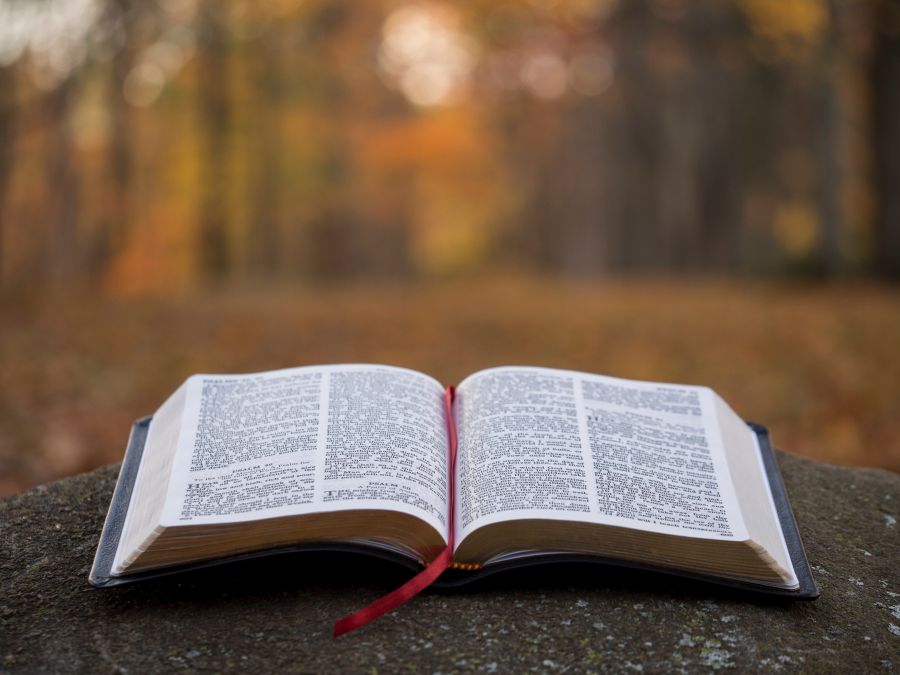崆峒山英语导游词1
Ladies and gentlemen
Welcome to Kongtong mountain. I'm your guide today. Just call me Xiao Lin. After you come here, in addition to seeing the scenery, I think you must also want to know some history. Let me introduce it to you.
Kongtong mountain is located 15 kilometers west of Pingliang City, Gansu Province, between the mainstream of the upper Jinghe River and its north bank tributary houxia river. It is 100 km long and 15 km wide on average, with an altitude of 1870-2100 M. The highest peak is steep with luxuriant trees, forming a natural green barrier in the northwest direction, so it is named Cuiping mountain, with an altitude of 2123 meters.
In geological structure, it belongs to xiaoguanshan reverse fault with a vertical fault distance of about 700 meters. The brown purple and green conglomerates of Yanchang group of Upper Triassic and Cretaceous bottom conglomerates and other vertical joints are developed. After erosion, many cliff canyons and Qifeng cliffs and other special landforms are formed.
There are two old planation levels on the top of the mountain: the top of Xiangshan, 2100 meters, is covered with Tertiary red beds; the first level, about 1900 meters, is cut into "Wutai" in the East, West, South, North and middle. The central platform is protruding, and all platforms are in a circle, each of which has its own unique potential.
Hetiantai, chaxiangtai and lingguitai are known as "Batai". They are the natural wonders of Kongtong mountain, together with "four mountains" (Fenghuangling, shiziling, cangsongling and qipanling), and "two peaks" (candle peak and leishengfeng).
Nine temples and twelve palaces of Buddhism and Taoism have been built successively in the platforms and foothills. There are 42 temples, most of which are concentrated in the "Wutai" area, forming a large-scale architectural complex. At present, only the Song Dynasty stone Scripture building of endor.".
After repair, the memorial tablet of Baoqing temple in Kongtong mountain, which was written by Cunda hall and Shangting in the Republic of China, is now abandoned. In the original hall, the top ten demons are vivid and lifelike, with smooth and natural lines. Unfortunatelyxxx All of them have been destroyed.
Dongtai on the lintel and the couplets on both sides: "Xianshan, Shenshan, daoshan, Foshan, Rushan, shanguangweizhen; sunny scenery, rainy scenery, snowy scenery, sun scenery, moon scenery, all alone". Guan Yunchang and his generals Zhou Cang and Guan Ping in the story of the three kingdoms are worshipped in the temple.
Guan Yunchang is almost a household name in China, and everyone knows it. In those days, Guan Yunchang rode alone for thousands of miles, passed five passes, and killed six generals. In addition to being brave and good at fighting, Guan Yunchang also made "three friends in Taoyuan" with Liu Bei and Zhang Fei. He wholeheartedly supported Liu Bei and was loyal to his country.
After his death, temples were built all over the country for his statues, and he was called "Guan Gong", "Guan Di", "Wu Sheng" and so on. Guan Yu is the only venerable of Buddhism, Taoism and Confucianism in China. Buddhism is called Kalan Bodhisattva and is the patron saint of the temple. Taoism is regarded as the God of wealth and vice Jade Emperor. Confucianism is honored as the sage of martial arts.
Dongtai is a good place to watch the sunrise, the sea of clouds and the night view of Pingliang City. There is Xuanhe cave on the cliff of Dongtai, 500 meters above the ground. According to folklore, Xuanhe used to be a pair of boys and girls who served guangchengzi. They fell in love with each other for a long time. Although they were taught by their master, their infatuation could not be changed.
Later, guangchengzi became an immortal and returned to the fairyland. The two boys wanted to stay in Kongtong mountain, so guangchengzi left a fairy cave for them on the cliff, changed them into a pair of Xuanhe, and warned them: they should not stay in the world as they want, let alone do things that are deviant from the classics. They should understand the people's feelings and help the good people. At the foot of the mountain, there is the palace of asking questions. It is said that the Yellow Emperor Xuanyuan came to Kongtong mountain to ask where Yu guangchengzi had settled.
Well, let's get to know that first today. Having said so much, I believe everyone is full of interest in it. Let's dissolve ourselves and feel the charm of Kongtong mountain. But in this process, we should pay attention to safety, do not litter Oh!
崆峒山英语导游词2
Friends, Kongtong mountain is known as the religious holy land of Taoism and Buddhism in Northwest China. It has 42 buildings and 72 stone caves. According to historical records, after the unification of the Sui Dynasty, Kongtong mountain gained a stable period, so in the Tang Dynasty, monks and Taoists successively created temples and palaces. Later, it was built or rebuilt in the song, yuan, Ming and Qing Dynasties and even in the Republic of China. According to historical records, in its heyday, there were 42 fanchas and more than 650 houses. The prominent ones are "eight platforms, nine palaces and twelve courtyards". It is difficult to find out how many buildings there were in the heyday, but the old saying of "eight platforms, nine palaces and twelve courtyards" actually means something. Batai refers to the East, West, South, North and middle five stations, as well as the Baxian station, Linggui station and Zhao Shichun reading station. Nine palaces refer to Wen Wen palace, Wang Mu palace, Zixiao palace, feisheng palace, Nanya palace, jingle palace, Taiqing palace, Yuzhen palace and descendants palace. Twelve courtyards refer to Shuhua temple, from? There are many explanations from ancient times to modern times, but there are three kinds of textual research: first, there are many caves in Kongtong mountain, the most famous of which are Xuanhe cave and Kongtong cave. These caves either lie on the surface of the earth or on cliffs, because most of them are empty caves; Secondly, Kongtong mountain is the birthplace of Taoism, which emphasizes the empty and inaction philosophy of Taoism; thirdly, the word Kongtong is not a word of mountain in ancient times. It was originally a phonetic interpretation of the language of a clan tribe. It expresses the general concept of a location or all tribes in this area. Erya, the first dictionary in China, records that "beidaidou is an empty tree." It means that the sky is just below the Big Dipper. Another ancient book, Jizhong ZhouShu, further explains: "the lower tribes of Daxia, Shache, Yueshi, Kongtong and guzang in the north belong to Kongtong." After the development and extinction of the tribes, the famous mountains in the central area were used to refer to the mountains. In fact, the ancients had a very clear concept of this region. From Li Bai and Du Fu in the Tang Dynasty, LV Daqi in the Ming Dynasty to Kongtong in Lin Zexu's poems in the Qing Dynasty, this region generally refers to a large area, starting from Ruyang in Henan Province in the East and ending in Hexi in Gansu Province in the West. Pingliang, the central area, may be the residential area of the ten clans in the Shang and Zhou dynasties, so it is called Kongtong.
Please keep up with the line. In front of you is the ticket office, Chaotian gate. We can see that there are four stone goats on both sides of Chaotian gate. Why? Because it was very difficult for people to transport the building materials to the mountain by building palaces, temples and roads at first. So people found that goats had even hooves and were good at walking small paths. From then on, goats undertook the work of carrying materials. In order to commemorate the contribution of goats to Kongtong mountain, later generations molded them Here it is.
Chaotianmen was built in the Ming Dynasty. The three characters "Chaotianmen" on the lintel were written by Mr. Zhang Xiumin, a famous calligrapher in Pingliang. The three characters "Kongtongshan" were inscribed by Mr. Qigong, a famous calligrapher in contemporary times. The couplets on both sides of "Yunshan steps to the sky, Wuhai floats to Chayi daomen" were inscribed by Mr. Ouyang Zhongshi, vice chairman of China Calligrapher Association. Here is the Taoist Dharma protector Wang Lingguan. Wang Lingguan is the Taoist Dharma protector. Wang Lingguan, formerly known as Wang Ye, is sa Shoujian, a disciple of Xujing immortal, the 30th generation of Heavenly Master in Xihe. He burned Wang Ye with fire. The king refused to accept the evil, and told the heaven court. The Jade Emperor gave the wise eye and the Golden Whip.
As the saying goes: "Wang Lingguan, keep peace", then everyone hurry through Chaotian gate to seek peace!
There are two stone tablets on the cliff. On the left is a poem engraved by Li Ying, a county officer of Pingliang county during the reign of Emperor Kangxi of the Qing Dynasty, chanting Xuanhe, "the crane of Yuan Dynasty flies high and the sky is clear. There are immortal birds left for thousands of years. What's the matter now?" it is said that Xuanhe is the immortal bird of Kongtong mountain. On the right is the portrait tablet of Guanyin presented by Mr. Wu Lengxi in 1994, which is called Guanyin Bodhisattva by Buddhism. Taoism is worshipped as Cihang Taoist, and is a venerable person worshipped by both Buddhism and Taoism. This stone tablet is also the only blue stone tablet in Kongtong mountain. From now on, we need to climb 669 steps to reach Huangcheng. Because there are many and steep steps, we must pay attention to safety. We can walk without looking at the scenery.
This two-story three Ying grotto building is Yaowang cave, which was built in the Ming Dynasty. It is dedicated to Sun Simiao (middle), Bian que (left) and Hua Tuo (right). Sun Simiao was born in the first year of kaihuang of Sui Dynasty and died in the first year of Yongchun of Tang Dynasty. He lived 102 years (or 141 years). He is a famous medical scientist and pharmacist in the history of China and even the world. In history, it was regarded as the "king of medicine". Sun Simiao is a famous doctor of ancient and modern medical ethics, especially his emphasis on medical ethics, which is a good story for later generations. In his famous book qianjinfang, the medical ethics of "great medical sincerity" is also placed in an extremely important position, with special topics and discussions. Sun believes that "human life is very important, and there are thousands of gold. One side helps it, and the virtue is more than that." therefore, his two works are titled with the word "thousands of gold", which is called "thousands of gold Yaofang" and "thousands of gold Yifang". Qianjin Yaofang is the earliest medical encyclopedia in China. From basic theory to clinical practice, there are all kinds of theories, methods, prescriptions and medicines. One is ancient books and records, the other is folk prescription. Qianjin Yaofang has made a great contribution to dietotherapy, health preservation and pension. There are many stories about him. It is said that he once went to Kongtong mountain to practice medicine for three years, where he treated people's diseases, regardless of the poor, the rich and the poor. He treated people equally, and his medical ethics was very noble. He also cured the tumor on the back of the Dragon King of Jinghe and took out the broken bone stuck in the throat for the tiger. In order to thank Sun Simiao for his kindness, the Dragon Tiger acted as his mount. The statue here is based on the legend of "sitting tiger and needle dragon". Hua Tuo (about the second century to the beginning of the third century A.D.) was born in peiguo Qiao (today's Hao County, Anhui Province). When he was young, he went to Xuzhou to visit his teachers and study, "and he also knew how to cultivate his nature.". Cao Cao often suffered from head wind vertigo and was cured by Hua Tuo's acupuncture. However, Hua Tuo was honest and didn't want to serve Cao Cao, so he arrested him and killed him cruelly. Hua Tuo is also the first medical scientist who invented and used Mabei powder for general anesthesia in the world medical history. After compiling "Wuqinxi", he sorted out "qingnangjing" in prison.
Bian que was a medical scientist in the Warring States period. Surnamed Qin, named Yue people, Qi Bohai mo (now Hebei Renqiu) people. Bian que is the originator of traditional Chinese medicine. Because of his excellent medical skills, Bian que cured many diseases for the common people. The working people of Zhao state gave him the title of "Bian Que". On the basis of summing up the medical experience of predecessors, Bian que created and summed up the methods of looking (looking at the complexion), smelling (listening to the voice), asking (asking about the condition) and cutting (according to the pulse) to diagnose the disease. Among the four diagnostic methods, bianque is especially good at inspection and palpation. At that time, bianque's pulse cutting skills were superb and famous all over the world.
Along my right hand side, you can see this small mountain peak called candle peak. When winter snow melts in spring, the snow on the mountain peak slowly melts down like a candle, which is very beautiful. This scene is known as one of the twelve landscapes of Kongtong mountain - spring melting candle. Luo Chao, a poet of the Ming Dynasty, wrote a poem praising: "if you don't travel early in the mountains, you will be in good condition for your youth. I'm afraid that the moonlight will move and the candle will be bright at night.".
崆峒山英语导游词3
Taking a breath of the fresh air after the rain, we drove West from Pingliang City for more than ten kilometers and finally came to Kongtong mountain, which is known as "the first mountain in the west". Looking up at the mountains, layers of trees for the mountains covered with spring new clothes, rolling mountains such as green waves rolling. Several pavilions and pavilions are on the cliff, where the ancient trees are towering, adding a bit of simple and exquisite cultural landscape to the mountain.
All the way up the mountain, we enjoy the perfect masterpiece of nature. You see, all kinds of trees grow on both sides of the path. Some of them have become towering trees; some of them are just small saplings with a few tender leaves; some of them have straight trunks and straight crowns; some of them have crooked branches, like a hunched old man. The grass and flowers swing with the wind, as if to welcome the arrival of distant visitors. We passed a path paved with cobblestones and came to the bottom of a straight and high stone step. I look up, what a long ladder! It's just like leading to the sky. No wonder it's called "ladder to heaven". I cheer myself up and go up. But just halfway up, I was out of breath. The moss in the stone cracks on the stairs is so slippery that my feet are a little disobedient. It's a dilemma to look down and up. I can't help it. I finally got on the ladder of heaven. After all, where there is a will, there is a way!
Encouraged by the singing of birds all the way, we climbed the Kongtong mountain. The joy of success filled my heart. "Shasha..." The breeze blowing the lush trees in the mountains, this wonderful sound and the clear bird song like dew together play a vibrant nature Concerto. The first feeling of climbing Kongtong mountain is so wonderful that my mood is as bright as the sunshine. Looking down at the foot of the mountain, there are many peaks and cliffs standing up. It seems that the mountains are smiling at me. Vast forest, smoke cage fog lock, such as ethereal fairyland. However, the green of the mountains gives people a very different aesthetic feeling: deep green, fresh green, lively green crisscross together, woven into a soft blanket. In the middle of the mountains, there is a vast lake, which is pure, elegant and intoxicating. Green boat lakeside, sporadic a few Qionglouyuyu, appears more elegant and quiet, full of poetic. This lake is called tanzheng lake. It's ethereal. A melodious tune comes from the pavilion and lingers in my ears. This beautiful Kongtong mountain really makes me feel the wonderful feeling of "people swimming in paintings".
崆峒山英语导游词4
In the morning, my father told me that my family was going to visit Kongtong mountain. Suddenly, my mood is particularly excited. Put on your clothes and trousers. When I opened the curtain, I saw that the sky was clear and sunny, which made me even more excited. After we packed our bags together, we sang and laughed in the car. We really wanted to get to our destination. Time passed in the laughter, we finally came to the long-awaited Kongtong mountain.
We came to the gate of Kongtong mountain. First of all, the three powerful characters "Kongtong mountain" glittered in the sunlight. At the gate is a large square with a sea of people and tourists from all over the world. There is a big TV in the center of the square, which introduces the scenery of the scenic spot.
Entering the gate, we took the cableway to the scenic spot on the hillside - Zhongtai. The scene in front of me made me marvel. Looking around, the steep stone wall is full of trees. There are straight pine trees, tall and straight birch trees, and many unknown trees. They are really colorful! Some are golden; some are red like fire; and some are green. They are so beautiful!
We continued to walk up the ladder and looked at the trees in front of us. We decided to collect different leaves. My mother and sister also decided to take part in the leaf collecting activities. We'll collect this one and that one. Some of these leaves are like chicken feet, some are like lotus leaves, and others are not sure what they look like. Their different shapes make us dazzled and overwhelmed.
In the evening, we went down the mountain. Although we didn't climb to the top of the mountain this time, we were happy. I believe that in the near future, my family will go to Kongtong mountain and take my sister to climb to the top of the mountain.
崆峒山英语导游词5
Kongtong mountain is located 12 kilometers west of Pingliang City, Gansu Province, overlooking Xi'an in the East, Lanzhou in the west, Baoji in the South and Yinchuan in the north. It is the fortress of the ancient silk road going out of Guanzhong in the West.
With an area of 84 square kilometers and an elevation of 2123 meters, the main peak of Kongtong mountain scenic area is a combination of natural landscape and cultural landscape. It is of high ornamental, cultural and scientific value. Since ancient times, it has been known as "the first mountain from the west", "the wonder of Xizhen" and "the holy land of Daoyuan".
Kongtong mountain is a branch of Liupan Mountain. It is a natural kingdom of animals and plants. There are more than 1000 kinds of plants and more than 300 kinds of animals. The forest coverage rate is more than 90%. During this period, the mountains and cliffs stand like miraculous work; the vast forest and sea, smoke cage and fog lock, like an ethereal fairyland; the high gorge and flat lake, the same color of water and sky, have the charm of Lijiang River. It is rich in the magnificence of the mountains in the north and the beauty of the scenery in the south. The dignified and elegant 42 building complex of Batai, Jiugong and 12yuan, with 72 stone caves, is magnificent and rich in details.
Since ancient times, Kongtong mountain has attracted many talented people. Emperor Xuanyuan, who is regarded as the ancestor of the Chinese people, personally visited Kongtong mountain and asked the wise man guangchengzi for advice on the way of governing the country and the art of keeping in good health; Sima Qian, Wang Fu, Du Fu, Bai Juyi, Zhao Shichun, Lin Zexu, Tan Si and other scholars also left a large number of poems, Huazhang, steles and inscriptions. Kongtong Wushu is famous in China with Shaolin, Wudang, Emei, Kunlun and other Wushu schools.
相关文章
简短导游词欢送词10篇2023-06-08 22:09:00
西施故里导游词(十四篇)2023-06-10 01:51:47
旅游景点武当山的中文导游词2023-06-10 13:29:59
介绍兵马俑的导游词范本2023-06-17 23:22:26
故宫导游词精选十五篇)2023-06-12 02:43:51
学校导游词范文三篇2023-06-16 22:29:51
上海对外经贸大学和北京交通大学(威海校区)对比哪个好(排名分数线区2024-03-31 16:25:18
河北高考排名237950名物理能上什么大学(能报哪些学校)2024-03-31 16:19:23
山东城市建设职业学院在山东招生人数和招生计划 多少人2024-03-31 16:15:16
上海农林职业技术学院在湖南招生人数和招生计划 多少人2024-03-31 16:12:52
吉林农业科技学院在湖南招生人数和招生计划 多少人2024-03-31 16:09:19
安徽高考多少分可以上云南经贸外事职业学院 招生人数和最低分2024-03-31 16:04:52
景点导游词(十五篇)2023-06-11 20:10:27
四川九寨沟导游词(精选十五篇)2023-06-03 11:44:39
湖北省有名景点导游词2023-06-18 14:24:56





